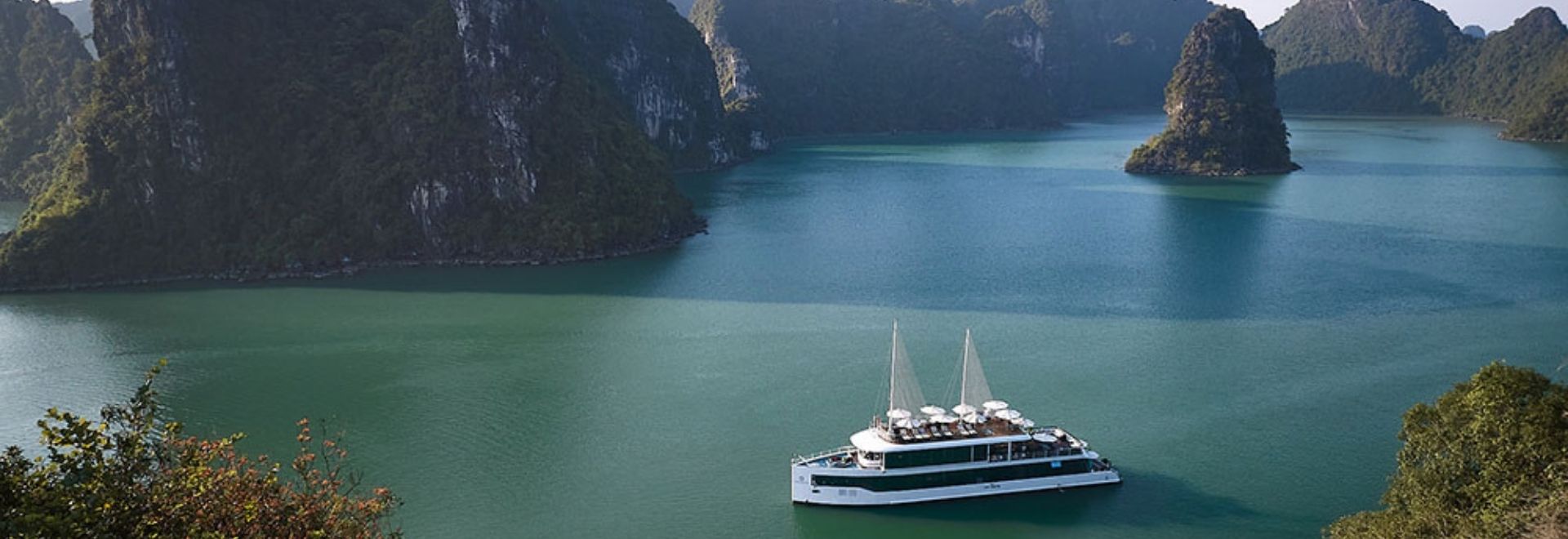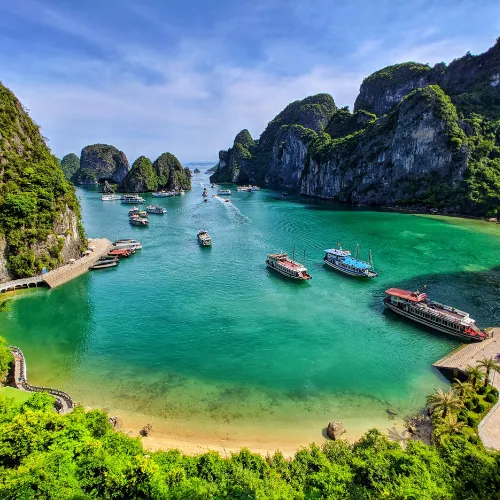Mai Chau, a place worth paying a visit to
Mai Chau, only 140 kilometers away from Hanoi, is part of the mountainous North-West region of Vietnam. This destination is extremely ideal for escaping from the city’s hustle and bustle. Let’s find out how to get, the best time to visit, accommodations, sights and activities, and local specialties in Mai Chau with Asia Local Tours!
The Mai Chau’s proximity to the capital makes it an ideal escape for nature lovers. Here, small ethnic minority villages sit among a patchwork of paddy fields surrounded by green mountains. Spend a night or two immersed in Vietnam’s rural culture, dining on delicious home-cooked cuisine, and learning about the traditions of the ethnic groups.
Sights and activities in Mai Chau
Mai Chau, a land formed, shaped, and painted by nature and human beings with different materials: sandstone, limestone, clay, thick layer of humus, diverse cultures, different histories, ways of leaving, etc., boasts many impressive sights that are worth joining some activities to explore, such as walking, trekking, riding, boating, etc.The names Lac, Pom Coong, Mai Hich, Pu Bin, Thung Khe, Ba khan, Hang Kia make a good list.
Lac and Pom Coong village
Lac and Pom Coong, two villages with some 170 households, are at the very heart of the area. Their friendly owners, the White Thai people, have been living here since their migration 700 years ago. Their living space, a house on stilts or a turtle house traditionally built just to fit nicely into a beautiful tranquil idyllic setting with surrounding high mountains, green forests, and paddy fields, is worth a visit. Daytime activities by the locals here are weaving brocades on a wooden loom, making ‘Can’ local rice wine, farming from dawn to dark, etc. After their dinner, the farmers become owners of their stage – nice singers and dancers as well.
To get it all, a loop on foot or by riding (bicycles or electric cars) through lush rice fields, and idyllic villages is highly recommended for any travelers, in particular those who are with kids, during the day. At night, culturally getting entertained with a warm White Thai atmosphere that features a dinner together with a family host and its member, some dances should be a “Yes”.
Thung Khe Pass
Between Tan Lac and Mai Chau, Thung Khe Pass, also called White Rock Pass, is at a height of some 700 meters in altitude, making it a good stop-over to enjoy a gorgeous typical view of karst formation settings from high above (weather permitting) and taste some local foods by the Muong. High and meandering, this pass occasionally brings those who are from lowland areas a new feel – into an ocean of mist.
Mo Luong Cave
Within walking distance from Mai Chau town, right to the left side of road 15 toward Lac and PomCoong villages, Mo Luong Cave is special, for it was used as the main source of water for the area in the past and a local clinic where wounded Vietnamese soldiers got treated during the Vietnam – France war. Historically and geologically, the cave is meaningful, so it deserves a visit
Chieu Cave
Not far from Mo Luong cave, Chieu cave is at the height of 250 meters above sea level, with its tree-covered 15-meter wide mouth. It is another choice for those who love nature-made cracks. To reach here, from Mai Chau town, head southwest to a sign that reads “To Chieu cave”. As many as 1200 steps are what travelers have to conquer. It is certainly tiring, but it is worth it because those who say “made it” get a better view of the valley from a different perspective.
Van village
This village is near Mai Chau town and impresses travelers with its less busy life and some small patches of terraced rice fields. Like their neighbors in Lac and Pom Coong, the Thai villagers here are friendly and hospitable. A nice walk around the village combined with a visit to the market nearby is recommended, particularly on Sunday mornings
The Thai Museum
It is a private collection of valuable old objects made by the White Thai: silver coins, earrings, necklaces, old looms, embroidered blankets, wooden and bamboo baskets, traps, jewelry cases, flint guns, lots of farming tools… The collector, a White Thai man, spent ten years, bringing them together. They are all now on display at the Culture House in Van village.
Go Lao cascade
Go Lao is the name that was given by the locals to a small waterfall at an unknown time. The fall is 15 kilometers away from Mai Chau town. It is not so special, though something for those travelers who love nature and be in love. To get here, head for Moc Chau for 15 kilometers, then ask the residents around the path down to the fall.
Ba Khan village
It is the name that goes with a commune on Hoa Binh lake, a big reservoir by the Vietnamese and the Russians in the late 70s to produce power. Water and high mountains are here to make this place a good sight with a different activity: boating on a river to admire wild scenery. Getting here requires travelers to repeat the first leg of the trip to the Go Lao cascade. After this 15-kilometer-long journey, another one of the same length gets travelers to the right destination of choice, Ba khan. The trip is doable from Mai Chau town by motorbike, bicycle, car, van, etc.
Hang Kia
Much higher than Mai Chau town (1,200 meters on average in altitude), Hang Kia is home to the H’Mong people. Like The White Thai, historically, the Mong came here from China in the aftermath of some civil wars over three centuries ago. Their life then was nomadic and could not have been harder. The new land has taught the H’Mong a lot of things, so their life these days has been seeing changes.
Hang Kia is so good a place for travelers to explore a different way of living. The H’Mong grow corn, an arrow shoots for both food and spirit, plum trees around their houses and on the hills; keep black pigs, and buffalos; trap wild animals in the forests. They live in a quieter community, a village that shows seemingly closed houses built right on the ground, with low roofs and doors. It is where three generations share every mood from sadness to happiness. It is where the H’Mong makes different kinds of products to sell at the market on Sundays…
To get here and to explore this part of Mai Chau, travelers need a vehicle for a 28-kilometer-long journey and good health for a strenuous long trek over hills and mountains.
Best time to go to Mai Chau
As part of the mountainous North-West region of Vietnam, Mai Chau shows a typically tropical climate, but high limestone mountains (much parted) and a thick and wide coverage make the climate here pleasantly changeable. With all these conditions times to get to Mai Chau the good: travelers can make their trip to Mai Chau any time of year, but the ideal is when the farmers are harvesting rice (May or June), for, apart from what are to be seen all year round, yellow paddy fields that bring Mai Chau a new color is so impressive. What a plus!
Mai Chau is a valley where local people cultivate wet rice. The valley is really beautiful during the rice season. There are two crops per year. The Spring- Summer crop starts in February and ends in early June. The Summer- Autumn crop starts in late June and ends in early October. The fields are lush green from March to May and from July to September. The ripening seasons when Mai Chau turns into a golden valley are May- June and September- October.




